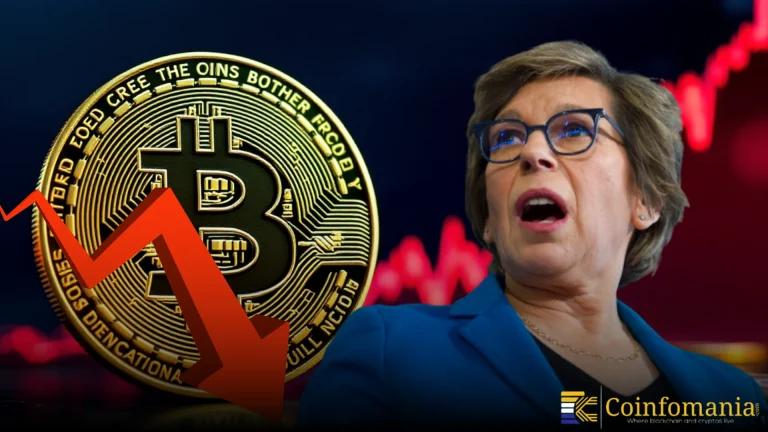NEAR Protocol Aims for 1M TPS to Power AI Agents as Aurora CEO Alex Shevchenko Sees Micropayments Replacing Subscriptions
Alex Shevchenko supports NEAR Protocol’s plan to reach 1 million TPS using sharding to power AI and micropayments.

Quick Take
Summary is AI generated, newsroom reviewed.
Alex Shevchenko predicts AI agents will shift the market toward micropayments, favoring low-fee blockchain systems.
NEAR Protocol aims to process 1 million TPS by end of 2025 using Nightshade 2.0 and dynamic sharding.
NEAR plans to enable 400ms transaction finality, surpassing VISA’s 3-second standard for real-time digital payments.
On May 31, Aurora co-founder Alex Shevchenko shared insights on platform X, responding to NEAR Protocol’s growth strategy. He shared the details on NEAR Protocol’s bold target of reaching 1 million transactions per second (TPS) by the end of 2025. Currently averaging 83 TPS with a recorded peak of 4,135, NEAR plans to scale over 240 times its real-time capacity. This leap aims to support AI agents, micropayments, and decentralized services with lightning-fast processing and low fees. NEAR Protocol head Bowen Wang confirmed the use of Nightshade 2.0 sharding, stateless validation, and zero-knowledge proof to achieve this milestone. The new infrastructure seeks to deliver 400ms finality, over 7 times faster than VISA’s 3-second settlement window.
Alex Shevchenko Predicts Micropayment Future for AI Agents
Shevchenko highlighted the shift AI agents will cause in the payments ecosystem. He emphasized, “AI agents naturally will optimize for low fees. That’s why subscription models will fade out.” According to Shevchenko, micropayments will replace recurring subscriptions. He suggested this shift will break away from traditional systems like VISA, MasterCard, and SWIFT. Blockchain, he said, has a real chance to become the backbone of this transition, but only if it can scale.
He also shared that the only way to scale is parallel processing, thus sharding. Shevchenko emphasized that aiming for 1 million TPS is essential. He explained that VISA’s top performance is around 50,000 TPS, so blockchain must reach at least 20 times that rate. He also noted that NEAR’s 400ms finality beats VISA’s 3-second requirement by over 7x.
NEAR Protocol Targets Sharding Breakthrough
NEAR Protocol is accelerating work on blockchain scalability through advanced sharding architecture. Bowen Wang, founder of NEAR One and core R&D lead, revealed the plan to process 1 million TPS within 2025. The target will be tested in a dedicated network before rolling out further improvements. Wang confirmed that Nightshade 2.0, NEAR’s dynamic sharding design, already allows shard expansion within a single block. He emphasized that upcoming work on dynamic resharding will enable shards to split and merge based on demand.
This flexible pipeline could address growing volume from AI agents and global users. Current figures show NEAR operates at an average of 83 TPS, with a recorded peak of 4,135 TPS. Theoretical capacity stands at 12,000 TPS, far behind the million-TPS vision. Yet, Nightshade 2.0 aims to scale past this bottleneck using stateless validation and real-time resharding.
Stateless Validation and ZK Proof Set to Improve Efficiency
NEAR’s future scalability depends on integrating stateless validation. The system allows validators to confirm transactions without downloading full data. This approach reduces bandwidth usage and verification time. Bowen Wang noted that future upgrades will likely use zero-knowledge (ZK) proofs instead of merkle-based state witnesses. ZK proofs will ensure faster transaction confirmation while minimizing computational load.
This enables more efficient interaction across chains and use cases, especially with growing AI agent involvement. Developers expect this change to transform blockchain validation, making NEAR more adaptable and future-proof. NEAR also aims to establish seamless interaction between chains using Chain Signatures. This feature will connect external blockchains and expand the NEAR ecosystem. The plan supports a cross-chain network without UX disruptions caused by existing layer-2 or multichain bridges.
Building the Groundwork for AI Agent-Based Internet
NEAR Protocol’s roadmap aligns closely with AI agent integration. Wang emphasized a future where AI systems can learn, operate safely, and make decisions independently. The vision involves a decentralized AI internet where systems learn, transact, and act without central control. The infrastructure will enable AI agents to interact, pay, and perform tasks in real time. A core focus remains on reducing entry barriers for developers and users. NEAR’s BOS (Blockchain Operating System) will further support AI-native applications. Wang confirmed that the team aims to create a frictionless, scalable blockchain system optimized for machine-to-machine interactions. Real-time feedback, rapid settlement, and reduced transaction fees remain central to that goal.
What Lies Ahead for NEAR Protocol Blockchain Scalability
NEAR Protocol is positioning itself as the leader in blockchain scalability through technical innovation and AI integration. The push toward 1 million TPS, backed by dynamic sharding and ZK proofs, reflects a long-term commitment to decentralization without compromising speed or user experience. Experts see the convergence of AI agents and blockchain as inevitable.
NEAR’s strategy to scale with sharding and improve interoperability could attract developers, enterprises, and users looking for a responsive and affordable network. If successful, NEAR could redefine how blockchain infrastructure supports a machine-driven economy. As AI agents rise in use, the need for fast, low-cost, and scalable platforms will only increase, and NEAR wants to be ready.
References
Follow us on Google News
Get the latest crypto insights and updates.


